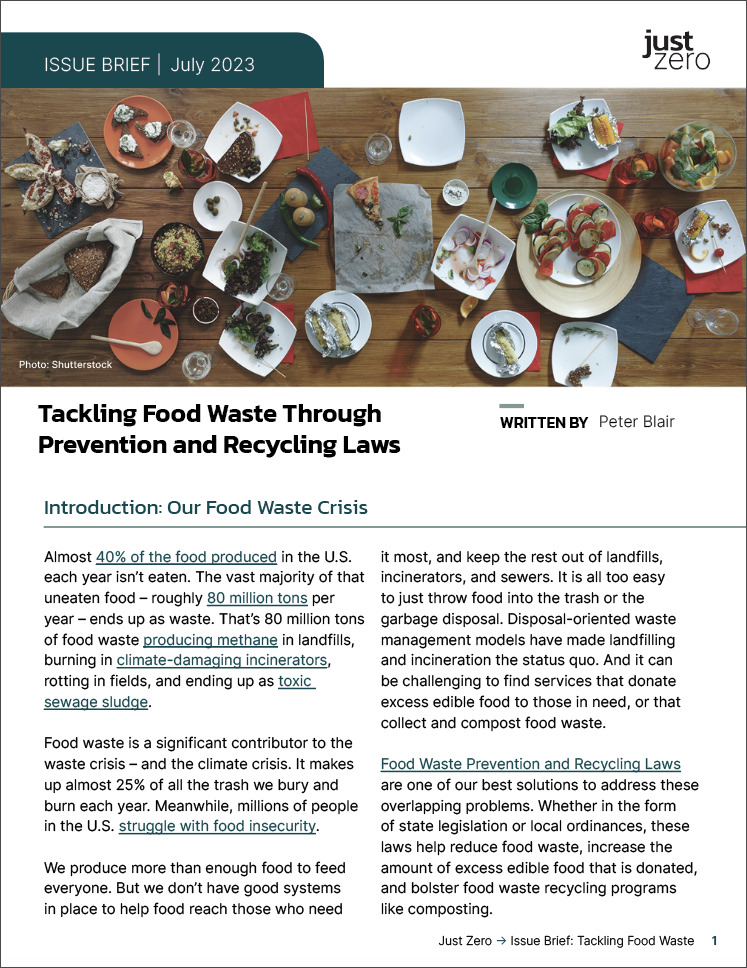
Introduction: Our Food Waste Crisis
Almost 40% of the food produced in the U.S. each year isn’t eaten. The vast majority of that uneaten food – roughly 80 million tons per year – ends up as waste. That’s 80 million tons of food waste producing methane in landfills, burning in climate-damaging incinerators, rotting in fields, and ending up as toxic sewage sludge.
Food waste is a significant contributor to the waste crisis – and the climate crisis. It makes up almost 25% of all the trash we bury and burn each year. Meanwhile, millions of people in the U.S. struggle with food insecurity.
We produce more than enough food to feed everyone. But we don’t have good systems in place to help food reach those who need it most, and keep the rest out of landfills, incinerators, and sewers. It is all too easy to just throw food into the trash or the garbage disposal. Disposal-oriented waste management models have made landfilling and incineration the status quo. And it can be challenging to find services that donate excess edible food to those in need, or that collect and compost food waste.

Food Waste Prevention and Recycling Laws are one of our best solutions to address these overlapping problems. Whether in the form of state legislation or local ordinances, these laws help reduce food waste, increase the amount of excess edible food that is donated, and bolster food waste recycling programs like composting.
Read the full issue brief. Download now: